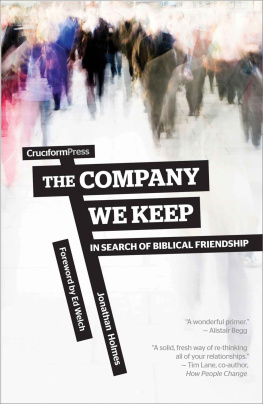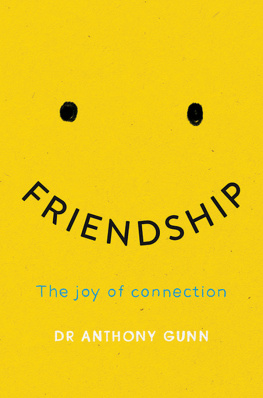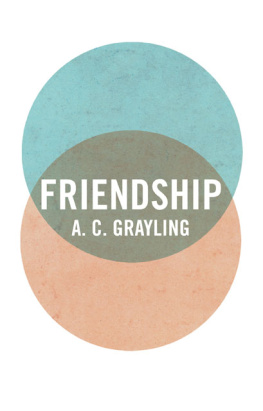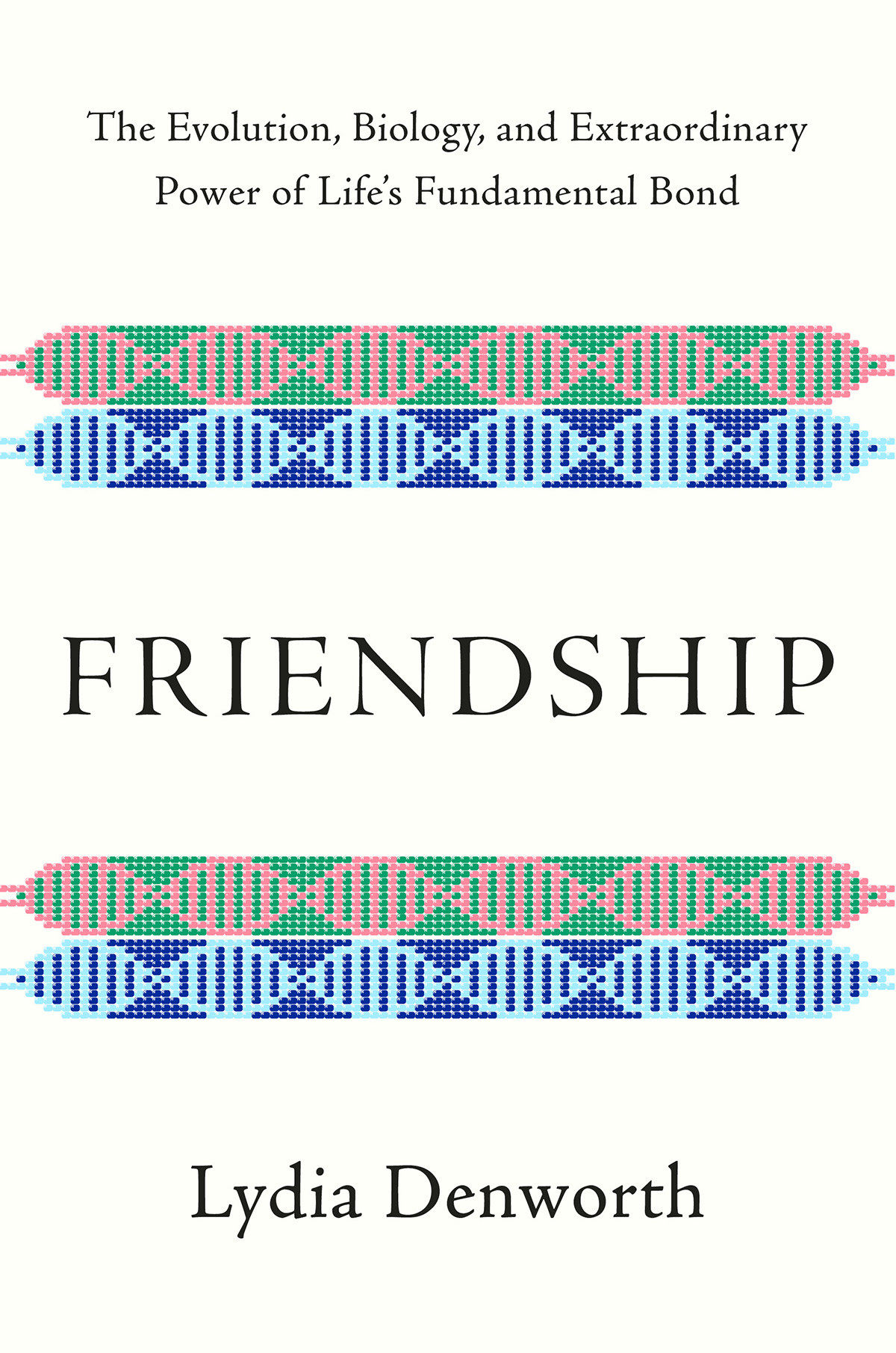FRIENDSHIP

THE EVOLUTION, BIOLOGY, AND EXTRAORDINARY POWER OF LIFES FUNDAMENTAL BOND
Lydia Denworth

For Mark
Contents
FRIENDSHIP

T he island of Cayo Santiago is close enough to the east coast of Puerto Rico that a strong swimmer could reach it. Its southern end rises out of the sea, invitingly green, and theres a narrow isthmus in the middle studded with palm trees that would make an excellent landing spot for day trippers from the nearby fishing town of Punta Santiago. But most locals have never set foot on Cayo and never will.
I arrived at the dock in Punta early one summer morning in 2016, the year before Hurricane Maria swept through and devastated the area. I was there to catch the seven oclock boat to the island. The local fishermen, for whom Cayo remains a little mysterious, eyed the assembling group with interest. A dozen or so people waited for the Boston Whaler that would ferry them over. Half wore matching navy-blue shirts and pants identifying them as staff of the Caribbean Primate Research Center. The others wore a more unofficial uniformlong pants, T-shirts, and hiking bootsand carried backpacks hung with water bottles and large-brimmed hats to protect against the sun. They were scientists and graduate students dressed for work. Except for the occasional carefully vetted visitor like me, these are the only people allowed on the island.
The seven-minute ride was all outboard hum and light sea spray. Approaching Cayo from the water, it is possible to see whats not visible from Puntas beach. This is an island of monkeys. Suddenly theyre there, spots of brown and gray perched in the trees or sitting in the shade or lying on the rocky cliffs. Occasionally they even play in the water, swinging off tree limbs and dropping into the waves like teenagers at a swimming hole.
I climbed off the boat and followed my host, Lauren Brent, a biologist from the University of Exeter in England. She dipped the soles of her boots in a bucket of disinfectant, then shouldered her backpack and I did, too. With a long brown ponytail tucked under her hat, Brent looked younger than her thirty-six years. But she was one of the people in charge on Cayo, overseeing many of the research assistants who clambered onto the dock behind us.
At the end of the dock, a sign commanded in English and Spanish: DO NOT ENTER. DANGER. THESE MONKEYS BITE! A musty smell of earth and wet fur intensified whenever the breeze died down. The chirping of birds rose and fell but never disappeared, and I realized it was not just birds I was hearing. The monkeys called to one another, at first like soft-spoken seagulls, then a sudden crescendo of screeches filled the air for a few minutes before abating. I saw why one of Brents former assistants called the island, a Jurassic Park kind of place.
A certain vigilance is in order on Cayo. We humans are wildly outnumbered. Rhesus macaques arent much bigger than house cats, and they reminded me of cats as they walked by, long legged and round bellied, tails waving in the air. But these monkeys are not going to curl up in your lap and purr. They are aggressive, as obsessed with status as Napoleon Bonaparte.
We hadnt gone more than a few yards when I, the newcomer, was tested by a male who refused to move from the path in front of me. I followed instructions and kept my head down, avoiding eye contact, until he moved on.
A group of juveniles peered down at us from the top of a nearby tree.
Hola, I see you, Giselle Caraballo, the colonys manager, called to them with a smile.
She turned to me. Her businesslike demeanor couldnt hide her affection for the animals.
The little ones are curious.
In a trick learned from their elders, the young macaques responded to her greeting by shaking the tree a little to show they werent scared.
Brent chimed in. Watch overhead. Streams of urine periodically cascade from the tree branches and anyone who spends more than a few weeks on the island gets peed on. Hats and sunglasses dont just protect against the sun.
The risk runs both ways. If humans carry disease ashore, it can be deadly for the monkeys. Tuberculosis is particularly dangerous and every human here has been tested and cleared. On the other hand, the macaques naturally carry herpes B. Its not a problem for them but can be fatal in the human nervous system: exposure via a bite, a scratch, or pee in the eye means immediate evacuation to an emergency room to begin a course of antiviral medication.
Cayos regulars take all of this in stride. Caraballo has been working here in various capacities for about a dozen years, since she graduated from the University of Puerto Rico, which now manages the place through its Primate Research Center. When Brent is on the island, she carries herself with a no-fuss confidence earned through experience. She first arrived in 2006 to spend a year with the monkeys as she researched her dissertation, and has since spent hundreds of hours on Cayo, weathered storms and disease outbreaks, and argued with customs officials over the declared value of fecal samples she sent back to the lab. (But its literally shit!) These days Brent leads an ambitious field research project on Cayo with her collaborator, and former boss, neurobiologist Michael Platt of the University of Pennsylvania.
Both women also know that although the monkeys are wary of humans, they are mainly interested in one another. That is why Brent works here among the exceedingly social macaques. She studies friendship, asking fundamental questions about how and why bonds develop between some individuals but not others, and measuring the consequences of those bonds.
What, she wants to know, are friends really for?
I am asking the same question. Thats what brought me to Cayo Santiago. For several years now, I have been visiting the front lines of the science of friendship as well as revisiting its history. Cayo qualifies as both.
As a science writer, my usual beat is the brain. Ive been following efforts to map the trillions of connections between brain cells. But recently, it has become evident that there is an equally important map to be made extending out from the brain. Invisible but essential, its the web of connections we forge with others, the network of individuals whose actions and emotions affect us just as we affect them. We may be separate beings, but we are deeply bound, as if there truly were silken threads tying us all together physiologically. Our personal webs of connection include our family members, our romantic partners, and our friends.
Of these three categories, the first two have been closely examined and much has been written about them. Rightly so. Family and romantic relationships hold enormous power over us and reverberate through our lives for good and for ill. When these bonds are happy, they bring us great joy and fulfillment. When they are unhappy, they make us miserable, sometimes crippling us psychologically. Always, we feel the footprints of our loved ones as they walk through our lives. I have spent most of the last decade supporting my husband in a new business venture, raising teenagers, and caring for a parent with Alzheimers disease. I know all too well how much my family members mood swings influence my own mood, and undoubtedly tip over into my physiology, at times causing my adrenaline to spike and my pulse to pound.














